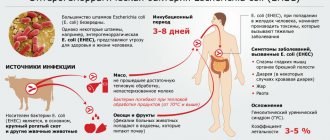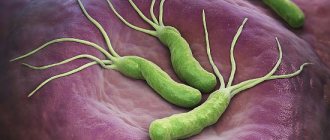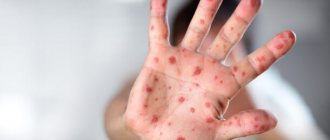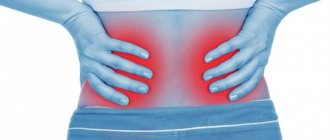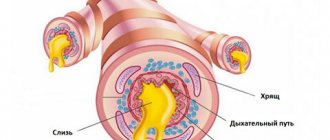How does a panic attack manifest?
Probably every person has experienced an acute, sudden feeling of unreasonable anxiety at least once. Such panic disorders are usually accompanied by a sudden onset of palpitations, a feeling of lightheadedness and trembling in the knees. Such a reaction is normal if a person really reacts to a threat or danger. But if such a condition is observed regularly, then we are talking about a psychoneurological disorder called a panic attack. This pathological condition manifests itself without cause and affects a person in completely different life situations. This can happen in transport or in other places with a large number of people, as well as in confined spaces. Initially, it seems that there are no reasons for such a reaction. According to modern psychologists, panic attacks are observed in approximately 5% of people who live in big cities.
Forecast
The patient’s personality traits directly affect the course of a panic attack, its severity and duration. Panic attacks become most severe for patients who perceived the first such incident as a real disaster. Sometimes the reaction of health care workers can also contribute to a faster progression of the disease. For example, when hospitalizing a patient in an ambulance, a thought is formed in his subconscious about serious health problems and the presence of serious illnesses.
Starting treatment as quickly as possible contributes to a positive prognosis for recovery. Each attack aggravates the situation, creates limitations in behavior, and is also clear evidence for the patient that the disease exists and is very dangerous. Recovery is possible when two factors coincide: adequate treatment by medical professionals and the efforts of the patient himself. In chronic panic attacks, these factors will contribute to a colossal increase in interpanic time.
Primary appointment with a neurologist: 1850 RUR.
Sign up Online 5% discount when registering from the site
Causes
Experts assure that panic attacks manifest themselves in a person as attacks in response to stressful situations and reflect a kind of internal struggle of consciousness with aggression from the outside world. Another reason why a person is bothered by the symptoms of a panic attack is the presence of certain psychological conflicts that the person cannot recognize and resolve. Of course, people susceptible to such attacks are primarily concerned with questions about whether such disorders are dangerous and how to cope with the manifestations of VSD. There is more than one forum on the Internet where people susceptible to such attacks are looking for an answer on how to get rid of such manifestations.
Most often, panic attacks, which are sometimes defined by doctors as vegetative-vascular dystonia , neurosis , etc., occur in people who have poor protection from the effects of stress due to a lack of serotonin and norepinephrine . It is these substances that effectively prevent the effects of emotional and physical discomfort on the body. Such people can maintain composure for some time, but when the stress is too strong and prolonged, they are overcome by a wave of panic attacks. Women are more susceptible to such manifestations. Panic attacks often occur during pregnancy, as well as in people who frequently drink alcohol.
The trigger for a panic attack can be anything: stress , emotional fluctuations , lack of sleep . In this case, a panic attack overcomes the patient not at the moment when there is an objective danger, but at ordinary times. Accordingly, it is difficult for a person to explain to himself what the cause of such nervousness is.
2nd group. Life situations in which it is not possible to realize any important need.
At the same time, the way out of the situation most often, according to personal ideas, is not satisfactory. For example, you can highlight the following needs:
- personal safety;
- satisfying sexual relationships;
- significant position in society;
- self-realization in activities (profession, business);
- close emotional relationships with other people.
A job that doesn’t suit you can interfere with the satisfaction of important needs—let’s say, for some reason you don’t have the opportunity to change it. Or an environment that does not appreciate you and belittles your merits. A country where there is no opportunity to realize oneself. This state of affairs leads to an increase in internal tension and anxiety, which can also contribute to the occurrence of panic attacks.
I think you have noticed that in the current situation with coronavirus, many people have reasons from the two listed groups in their lives. If they were there before, then there could be more of them. Forced isolation, an imposed alien lifestyle, fear of getting sick and dying in relation to oneself and loved ones, loss of business, unpaid loans, loss of livelihood, uncertainty of the future, lack of objective and a large amount of negative information - all this does not contribute to peace of mind and mental health.
Whether panic disorder occurs or not depends on the characteristics of the individual and the traumatic situation, as well as the individual’s ability to independently cope with this situation.
If a panic attack does occur, then the following, third group of reasons is at work. In this case, they talk about triggers, that is, the reasons that directly trigger the attack. In this case, it is extremely important to correctly identify them and “cancel the launch.”
Symptoms
As a rule, the first attack of a panic attack is most pronounced. Nervousness in a person is accompanied by a sharp rise in blood pressure , a pronounced affect. The patient's heart beats rapidly, and sometimes he may even lose consciousness. All subsequent manifestations of panic attacks are less pronounced in most cases.
After the first severe attack, a person should consult a doctor about how to deal with such manifestations. It is advisable to begin treatment of panic attacks immediately after the first cases of neuroses. A specialist will also tell you how to treat the disease and which methods are preferable in an individual case.
People prone to panic attacks tend to have elevated blood pressure during the daytime, which is the period of highest social activity.
Both during the first panic attack and during subsequent attacks, a person experiences pronounced vegetative symptoms : sweating, palpitations, feeling of heat , pressure in the throat, headache, numbness of the arms and legs . Such an attack lasts about ten to fifteen minutes, but sometimes can last about an hour. After the symptoms subside, the patient feels very weak and depressed.
A panic attack is a separate disease in which a person may not exhibit other phobias . Despite this, patients susceptible to such attacks often also experience various emotional and affective disorders. Thus, panic attacks can be combined with agoraphobia (fear of open space), claustrophobia (fear of enclosed spaces), and fear of crowds .
Sometimes panic disorder can be mistaken by a person for other diseases. Such misconceptions are most often present among those who have only recently begun to experience panic attacks. Such attacks are easily confused with manifestations of somatic diseases, with neurological diseases, as well as with some mental disorders.
Development mechanism
No one can reliably explain the pathogenesis of a panic attack. But there is a theory according to which the trigger is negative thoughts when they accidentally visit a person. Their action, akin to an objective threat, provokes the release of adrenaline and similar substances. They constrict blood vessels, causing increased heart rate and breathing. Blood pressure increases, and even in those who, in principle, do not suffer from this, the indicators reach 200 mm Hg. Art.
The amount of carbon dioxide in the blood decreases, and symptoms of hyperventilation, that is, breathing problems, increase. Receptors that cause excitation are stimulated and those responsible for inhibition are blocked. Thus, there is an increase in anxiety and panic symptoms and feelings of fear.
Many patients suffering from this disease are very afraid of losing consciousness. But in a panic crisis this is unlikely. All its development mechanisms indicate the opposite. In this state, the unconditioned “fight or flight” reflex is activated, which accompanies a frightening situation. In addition, high blood pressure and intense heartbeat simply will not allow you to do this.
Fear of fainting causes the patient to experience numbness in the limbs and dizziness. They are what confuse you.
How to spot a panic attack
There are objective criteria to determine whether a person is truly susceptible to panic attacks. You should accurately assess your condition and determine whether the symptoms described above are occurring, and also make sure that the following points are present.
In people prone to panic attacks, attacks occur suddenly and unexpectedly, with about four attacks per month. During at least one of the attacks, the person feels the fear of another panic attack. During an attack, there is a feeling of unreality of what is happening, the person experiences fear of dying or getting sick. It can be assumed that a person is developing a panic attack if he experiences at least four of the following symptoms: strong pulse and palpitations; tremors and chills; sweating; difficulty breathing, feeling of suffocation ; painful or difficulty breathing; discomfort in the chest on the left; nausea; dizziness and near fainting; a feeling of fear of going crazy or committing an inappropriate act; numbness or tingling in the arms and legs, sudden flashes of cold or heat.
Treatment
The optimal way to overcome panic attacks today is considered to be a competent combination of drug and non-drug therapy. The doctor adequately assesses the patient’s condition and selects an appropriate antidepressant drug. It should be taken over a long period. Sometimes this treatment lasts up to a year. In this way, you can regulate the content of serotonin and norepinephrine . Modern antidepressants can positively affect the patient’s quality of life without causing unwanted side effects. A person’s frequency and intensity of attacks decreases, fear disappears, and their general psychological state and mood improve. In addition, patients are prescribed tranquilizers and antipsychotics if necessary. If a patient is diagnosed with a vestibular form of panic attacks, then he is also indicated to take sedative neurometabolic stimulants.
Non-drug therapy methods include psychotherapy sessions and lifestyle changes. It is important that as few stressful situations as possible occur in a person’s life and more positive emotions are observed.
In addition to these methods of treatment for panic attacks, it is sometimes advisable for the patient to undergo some physiotherapeutic procedures. MDM therapy (mesodiencephalic modulation of the cerebral cortex), electrosleep, color therapy, and aromatherapy are practiced. Also sometimes prescribed are reflexology, a course of relaxing massage, physical therapy aimed at relaxation, and later - to increase tone. However, exercises should be moderately intense and dosed, since heavy loads can worsen the patient’s condition.
Auxiliary herbal treatment is also practiced, in which patients are advised to take decoctions of certain herbs every day with a calming effect. You can prepare decoctions and infusions from valerian , speedwell, oregano, nettle, lemon balm, mint, wormwood, motherwort , chamomile , hops, etc.
You should also pay attention to nutritional features. It is better to exclude spicy seasonings and foods, strong coffee and tea, and alcoholic drinks from the diet, as they have a stimulating effect on the nervous system.


